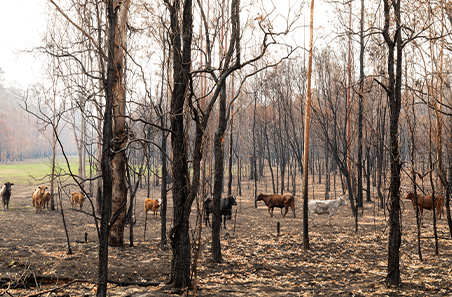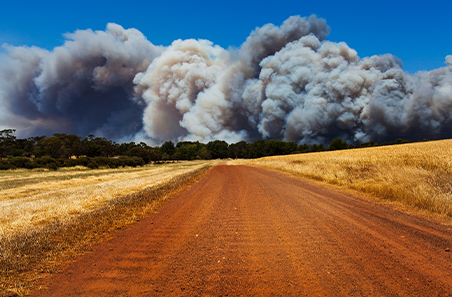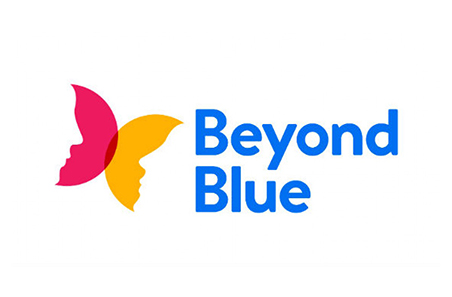
Managing livestock after a fire
NSW Local Land Services provides a comprehensive information sheet on how to manage livestock after a fire.
Stay informed with a short, sharp monthly summary of MLA’s latest research reports.
The immediate aftermath of a bushfire, particularly in the first four weeks, is an important time for producers to assess damage to their property and livestock and, where possible, start to recover their businesses.
This page contains important resources for cattle and sheep producers impacted by bushfires.
Managing livestock after a bushfire can be challenging and stressful. Animals may be dead or injured, access to feed may be reduced, and fences and other infrastructure may be damaged. These resources can help the recovery process:
NSW Local Land Services provides a comprehensive information sheet on how to manage livestock after a fire.
Visit the NSW DPI Bushfire hub for information on bushfire preparation, recovery and assistance.
WA DPIRD provides information to support those suffering from the effects of fire on the farm.
Producers are advised to seek professional advice from a vet or animal nutritionist, particularly before feeding grain to livestock for the first time.
This fact sheet provides best practice information for cattle producers when they need to transition pasture-fed cattle to a diet of hay and/or grain in an emergency situation.
This fact sheet provides information for cattle producers when they need to feed calves and transition weaners to a diet of hay and grain/pellets in an emergency situation.
This fact sheet provides best practice information for lamb and sheep producers when they need to transition pasture-fed lambs and sheep to a diet of hay and grain in an emergency situation.
While agistment can provide welcome relief following bushfire, offering feed or safety, all livestock movements, especially after a natural disaster pose an added biosecurity risk.
Recovery assistance will vary between states and regions. Contact your state department for more information on what is available in your area including published information and additional resources on bushfire recovery:
The National Farmers’ Federation Farm Hub has Australian bushfire information, key contacts and assistance.
Providing financial and in-kind support for industry events that will support producers recovering from bushfires.
The Back to Business webinars offer practical tips to help rebuild on the back of the recent bushfires, drought, floods and storms.
The Back to Business podcast series providing information to livestock producers as they get back to business following natural disasters.
If you, or someone you know, is struggling with mental health, you also can find a list of support services here.
If you’re thinking about suicide or experiencing a personal crisis, get in touch with Lifeline. Call: 13 11 14
Offering phone, live chat, email and online forum services for anyone who just wants to talk. Call: 1300 22 4636
The Fischers’ resilience, goal setting and careful decision making, along with support from the community, ensured a return to productivity in under two years and paved the way for genetic gain after a fire engulfed their property.
The 2019–20 bushfire season was early, far-reaching and it hit hard New England beef producer Stuart Austin. Four months on from the fire, with re-fencing completed Stuart had a chance to catch his breath and reflect on the experience.
Producers Steve and Lucy Morgan share their top tips for preparing for and recovering from bushfires after participating in MLA's Back to Business program.















